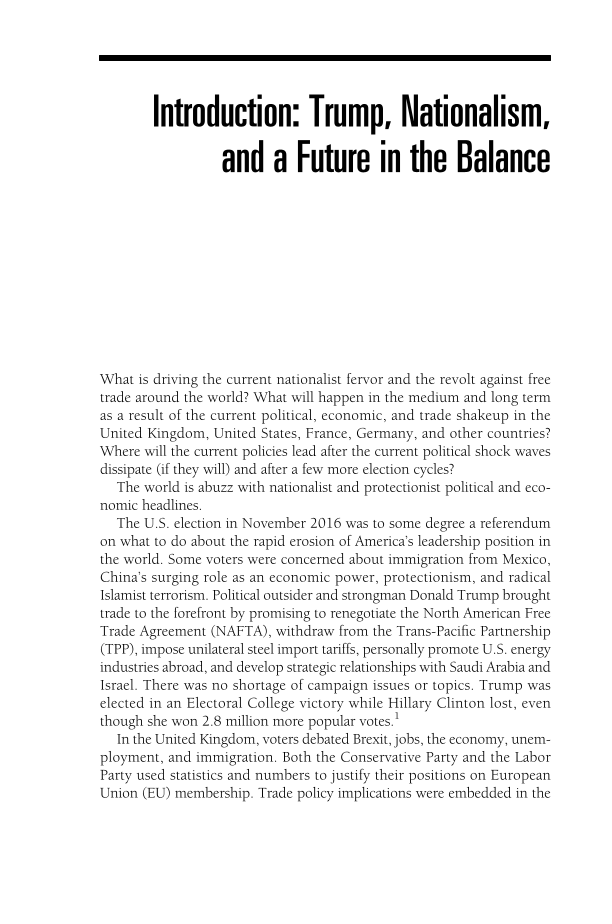Introduction: Trump, Nationalism, and a Future in the Balance What is driving the current nationalist fervor and the revolt against free trade around the world? What will happen in the medium and long term as a result of the current political, economic, and trade shakeup in the United Kingdom, United States, France, Germany, and other countries? Where will the current policies lead after the current political shock waves dissipate (if they will) and after a few more election cycles? The world is abuzz with nationalist and protectionist political and eco- nomic headlines. The U.S. election in November 2016 was to some degree a referendum on what to do about the rapid erosion of America’s leadership position in the world. Some voters were concerned about immigration from Mexico, China’s surging role as an economic power, protectionism, and radical Islamist terrorism. Political outsider and strongman Donald Trump brought trade to the forefront by promising to renegotiate the North American Free Trade Agreement (NAFTA), withdraw from the Trans-Pacific Partnership (TPP), impose unilateral steel import tariffs, personally promote U.S. energy industries abroad, and develop strategic relationships with Saudi Arabia and Israel. There was no shortage of campaign issues or topics. Trump was elected in an Electoral College victory while Hillary Clinton lost, even though she won 2.8 million more popular votes.1 In the United Kingdom, voters debated Brexit, jobs, the economy, unem- ployment, and immigration. Both the Conservative Party and the Labor Party used statistics and numbers to justify their positions on European Union (EU) membership. Trade policy implications were embedded in the
Document Details My Account Print multiple pages
Print
You have printed 0 times in the last 24 hours.
Your print count will reset on at .
You may print 0 more time(s) before then.
You may print a maximum of 0 pages at a time.

























































































































































































































